 [Image: Via NOAA].
[Image: Via NOAA].
The U.S. Department of Defense has awarded a handful of small business grants for exploring the “controlled enhancement of the ionosphere.” The aim of the grants is to find new ways “to improve radio communication over long distances”—and one of these ways might be “detonating plasma bombs in the upper atmosphere using a fleet of micro satellites,” or cubesats, New Scientist reports.
As the initiating government contract describes it, in order to perform this new atmospheric role, the cubesats—or an equally viable competitor technology—will need to produce “highly exothermic condensed phase reactions yielding temperatures considerably higher than the boiling points of candidate metal elements with residual energy to maximize their vapor yield… Such hardware will provide for controlled release options such as conventional point release, as well as extended in time and space.”
They would be, in effect, small plasma ovens—the metaphoric “bombs” of the New Scientist article.
The resulting “vapor yield” from metallic elements boiling in space would then chemically interact with the Earth’s atmosphere to create the aforementioned plasma. While spreading locally through the ionosphere, the plasma would, in turn, generate small patches of electromagnetic reflectivity across which radio signals could be bounced or relayed.
By ricocheting along this sky bridge of temporary plasma patches—like tiny chemical mirrors in space—radio signals would be able to travel far beyond the curvature of the Earth, greatly increasing the distance and accuracy of specific transmissions.
This long-range transformation of the sky itself into a transmitting medium recalls the work of radio historian Douglas Kahn. Kahn’s book Earth Sound Earth Signal specifically looks at the role of terrestrial and atmospheric dynamics on radio transmission, including the deliberate incorporation of those seemingly unwanted side-effects—such as interference from sunspot activity—into electronic art projects.
Kahn’s work came up on BLDGBLOG several years ago, for example, in discussing a proposal from the 1960s for transforming an entire Antarctic island into a radio-transmitting apparatus. The topographic profile and geologic make-up of the island made it a great potential resonator, according to researcher Millett G. Morgan.
 [Image: [Image: Deception Island, from Millett G. Morgan’s September 1960 paper An Island as a Natural Very-Low-Frequency Transmitting Antenna].
[Image: [Image: Deception Island, from Millett G. Morgan’s September 1960 paper An Island as a Natural Very-Low-Frequency Transmitting Antenna].
By taking advantage of these physical factors—and even subtly tweaking them in what we could also call “controlled enhancement”—the island would become part of a dispersed global infrastructure of electromagnetic relay points.
It’s worth mentioning that this would also make a fascinating landscape design project: sculpting a patch of terrain, from its exposed landforms and its subsurface mineralogy to the flora planted there, such as tree-antennas, so that the whole thing becomes a kind of radio-transmitting garden.
In any case, these tactical archipelagoes of plasma dispersed across the ionosphere by military cubesats would enable emergency wartime radio contact around the planet. By introducing patches of reflectivity, they would create a temporary extension of ground-based antenna infrastructure, stretching from one side of the Earth to another, an invisible bridge in the sky put to use for planet-wide communication.
Read the original contracting information over at the Small Business Innovation Research hub.
Briefly, it’s interesting to note another piece of recent tech news. Back in April, Swati Khandelwal reported that “a team of researchers from the University of Washington’s Sensor Lab and the Delft University of Technology has developed a new gadget that doesn’t need a battery or any external power source to keep it powered; rather it works on radio waves.”
She was referring to a device called WISP, “a small, battery-less computer that works on harvested radio waves,” in the words of project researcher Przemyslaw Pawelczak.*
 [Image: Przemyslaw Pawelczak’s “small, battery-less computer that works on harvested radio waves”].
[Image: Przemyslaw Pawelczak’s “small, battery-less computer that works on harvested radio waves”].
This is relevant for the possibility that this sort of thing could be scaled up to much larger pieces of equipment, such as uncrewed ground vehicles or other autonomous machines (including rovers on other planets); those devices could then be deployed in the field and simply wait there, essentially hidden in a powerless state.
You could then turn on these otherwise dormant computers, even from a great distance, using only pinpointed radio transmissions assisted on their way around the planet by localized plasma clouds; like electromagnetic Frankensteins, these sleeper-systems could thus be brought back to life by this strange, military wizardry of otherwise impossible radio transmissions.
Patches of plasma appear in the sky—and machines around the world begin to awaken.
[Note: When using the appropriate Polish lettering, Przemysław Pawełczak’s name renders oddly with this blog’s typeface; it is thus deliberately misspelled in the text, above; apologies to Pawełczak. Thanks to Wayne Chambliss for his thoughts on sleeper systems while I was writing this post. Very vaguely related: Operation Deep Sleep: or, dormant robots at the bottom of the sea].

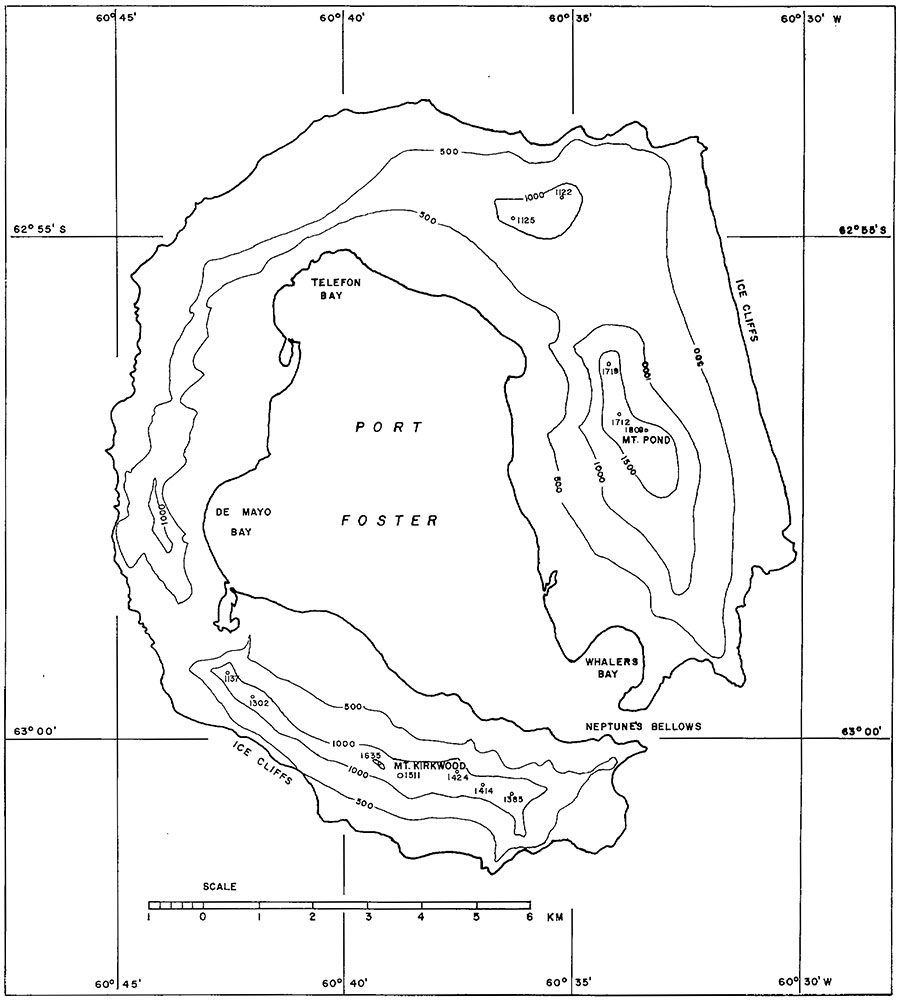 [Image: Deception Island, from Millett G. Morgan’s September 1960 paper An Island as a Natural Very-Low-Frequency Transmitting Antenna].
[Image: Deception Island, from Millett G. Morgan’s September 1960 paper An Island as a Natural Very-Low-Frequency Transmitting Antenna].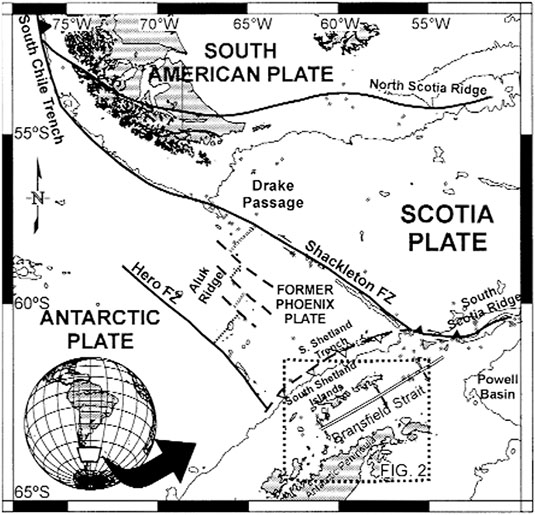 [Image: A map of Deception Island, taken from an otherwise unrelated paper called “Upper crustal structure of Deception Island area (Bransfield Strait, Antarctica) from gravity and magnetic modelling,” published in Antarctic Science (2005)].
[Image: A map of Deception Island, taken from an otherwise unrelated paper called “Upper crustal structure of Deception Island area (Bransfield Strait, Antarctica) from gravity and magnetic modelling,” published in Antarctic Science (2005)].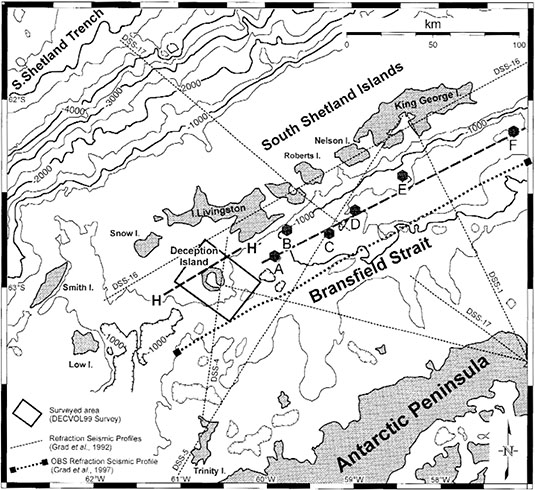 [Image: Deception Island, from “Upper crustal structure of Deception Island area (Bransfield Strait, Antarctica) from gravity and magnetic modelling,” Antarctic Science (2005)].
[Image: Deception Island, from “Upper crustal structure of Deception Island area (Bransfield Strait, Antarctica) from gravity and magnetic modelling,” Antarctic Science (2005)].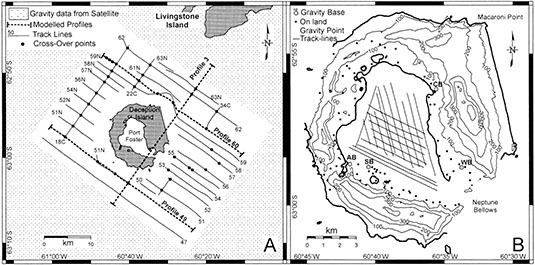 [Image: Deception Island, from “Upper crustal structure of Deception Island area (Bransfield Strait, Antarctica) from gravity and magnetic modelling,” Antarctic Science (2005)].
[Image: Deception Island, from “Upper crustal structure of Deception Island area (Bransfield Strait, Antarctica) from gravity and magnetic modelling,” Antarctic Science (2005)].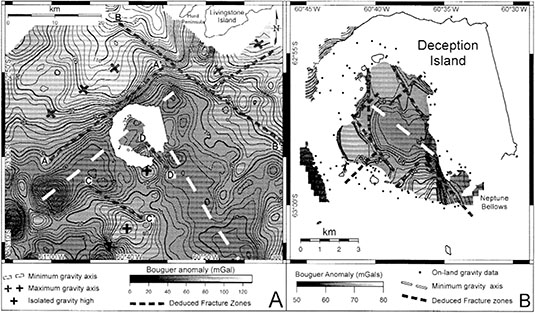 [Image: Deception Island, from “Upper crustal structure of Deception Island area (Bransfield Strait, Antarctica) from gravity and magnetic modelling,” Antarctic Science (2005)].
[Image: Deception Island, from “Upper crustal structure of Deception Island area (Bransfield Strait, Antarctica) from gravity and magnetic modelling,” Antarctic Science (2005)].